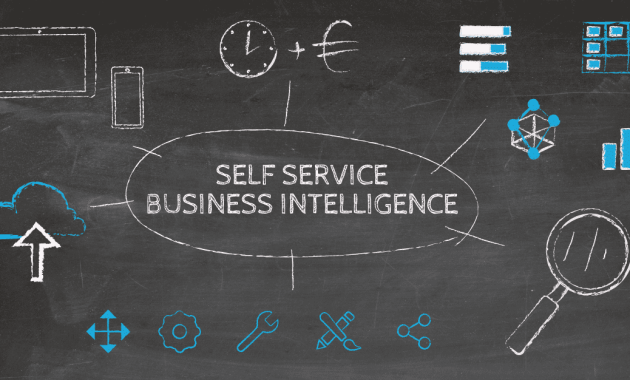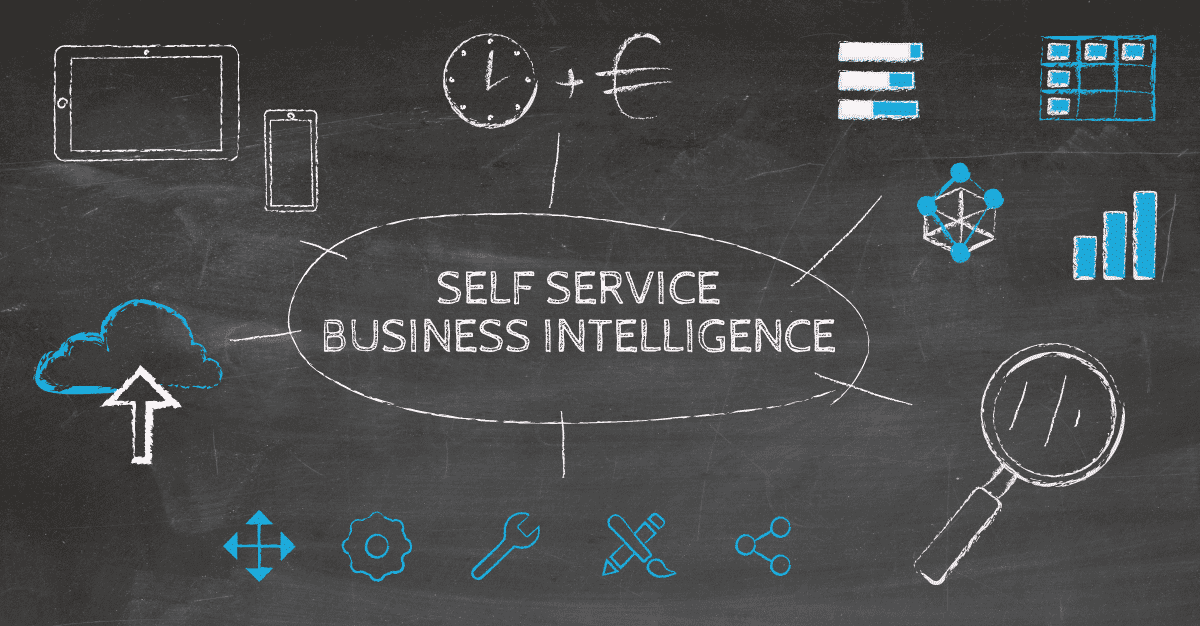
Unlocking Smart Growth: The Power of Self-Service Business Intelligence Software
In today’s data-driven world, organizations are constantly seeking a competitive edge. The ability to make informed decisions quickly is crucial for success. This is where self-service business intelligence (BI) software steps in. It empowers users to analyze data and gain insights without relying heavily on IT or data specialists. This article explores the benefits of self-service business intelligence software for smart growth, its key features, and how it can transform your organization.
The Rise of Self-Service BI
Traditional BI often involved complex processes. Data was extracted, transformed, and loaded (ETL) by IT teams. Reports were generated by specialists. This approach was time-consuming and created bottlenecks. Self-service business intelligence software offers a paradigm shift. It puts the power of data analysis directly into the hands of business users. This allows them to explore data, create reports, and make decisions independently. This shift is driven by several factors.
- Increased Data Volume: Businesses are generating more data than ever before. Traditional BI methods struggle to keep pace.
- Demand for Agility: Organizations need to respond quickly to market changes. Self-service BI enables faster decision-making.
- User Empowerment: Business users want to control their data analysis. They seek insights tailored to their specific needs.
Key Features of Self-Service BI Software
Self-service business intelligence software offers a range of features. These features enable users to perform data analysis effectively. Understanding these features is crucial for selecting the right software. Here are some of the most important ones:
Data Connectivity and Integration
The ability to connect to various data sources is essential. This includes databases, spreadsheets, cloud services, and more. The software should also offer data integration capabilities. This allows users to combine data from multiple sources. This creates a unified view of the business.
Data Visualization and Reporting
Data visualization tools are vital. They transform raw data into easy-to-understand charts and graphs. This makes it easier to identify trends and patterns. Reporting features allow users to create custom reports. These reports can be shared with stakeholders.
Data Discovery and Exploration
Users need tools to explore data freely. This includes features like drag-and-drop interfaces and ad-hoc querying. These tools enable users to ask questions of the data. They can uncover hidden insights. They can explore data in an intuitive way.
Data Preparation and Modeling
Self-service business intelligence software should include data preparation tools. These tools allow users to clean, transform, and model data. This ensures data accuracy. It also improves the quality of analysis. Data modeling helps users define relationships between data elements.
Mobile Access and Collaboration
Mobile access allows users to access data and reports on the go. Collaboration features allow users to share insights. They can also work together on analysis projects. This enhances communication and teamwork.
Benefits of Self-Service BI for Smart Growth
Implementing self-service business intelligence software offers significant benefits. These benefits contribute to achieving smart growth. Here are some of the key advantages:
Faster Decision-Making
Self-service BI reduces the time needed to obtain insights. Users can analyze data and make decisions in real-time. This agility allows businesses to respond quickly to market changes.
Improved Data Literacy
When users interact with data, their data literacy improves. They become more comfortable with data analysis. They start to understand the value of data-driven decision-making.
Enhanced Business User Empowerment
Self-service business intelligence software empowers business users. They can control their data analysis. They do not need to rely on IT or data specialists. This improves their ability to make informed decisions.
Cost Savings
By automating data analysis tasks, self-service BI can reduce costs. It frees up IT resources. It reduces the need for external consultants. This leads to significant cost savings.
Increased Revenue
Data-driven insights can identify new revenue opportunities. Self-service BI helps businesses understand customer behavior. It also identifies market trends. This leads to increased revenue and profitability.
Choosing the Right Self-Service BI Software
Selecting the right self-service business intelligence software is critical. Consider your organization’s needs and requirements. Here are some key factors to consider:
Ease of Use
The software should be user-friendly. It should have an intuitive interface. This allows business users to quickly learn and use the software. Ease of use is a key factor for adoption.
Data Source Compatibility
Ensure the software supports your existing data sources. Check for compatibility with databases, cloud services, and other data sources. This is crucial for data integration.
Scalability
The software should be able to scale with your business. As your data volume grows, the software should handle the increased load. Scalability ensures long-term value.
Security
Data security is paramount. The software should offer robust security features. This protects sensitive data from unauthorized access. Security is a top priority.
Pricing and Support
Consider the pricing model and available support options. Choose software that fits your budget. Ensure that adequate support is available. This is crucial for successful implementation.
Real-World Examples of Self-Service BI in Action
Many organizations are using self-service business intelligence software. They are driving smart growth. Here are some examples:
Retail
Retailers use self-service BI to analyze sales data. They identify best-selling products. They can also optimize inventory levels. They can also personalize marketing campaigns.
Healthcare
Healthcare providers use self-service BI to analyze patient data. They can improve patient outcomes. They can also optimize resource allocation. They can also identify areas for improvement.
Finance
Financial institutions use self-service BI to analyze financial performance. They also manage risk. They also detect fraud. They can also improve customer service.
Implementing Self-Service BI: Best Practices
Successful implementation of self-service business intelligence software requires a strategic approach. Here are some best practices:
Define Clear Goals
Start by defining your business goals. Identify the key performance indicators (KPIs). Determine what you want to achieve with self-service BI. This gives a clear focus.
Provide Training and Support
Offer training to your users. Provide ongoing support. This ensures that users can effectively use the software. This improves adoption rates.
Establish Data Governance
Implement data governance policies. This ensures data quality and consistency. It also protects sensitive information. This is crucial for data integrity.
Promote Data Literacy
Encourage a data-driven culture. Promote data literacy throughout your organization. This enhances the value of self-service BI. This empowers users to make decisions.
Monitor and Evaluate
Continuously monitor the use of the software. Evaluate its impact on your business goals. Make adjustments as needed. This ensures optimal performance.
The Future of Self-Service BI
The future of self-service business intelligence software is bright. Expect to see several key trends:
- Increased Automation: AI and machine learning will automate data analysis tasks.
- Enhanced Collaboration: Collaboration features will become more sophisticated.
- Mobile-First Design: Mobile access will become even more important.
- Focus on Data Storytelling: Data visualization will become more advanced.
Self-service business intelligence software is essential for smart growth. It empowers users to analyze data. It also provides valuable insights. By implementing the right software. Organizations can make data-driven decisions. This leads to improved performance. They can also gain a competitive advantage. This will help them thrive in today’s data-driven world.
Conclusion
Self-service business intelligence software is a powerful tool. It enables smart growth. It empowers organizations to make data-driven decisions. By implementing the right software. Organizations can unlock the full potential of their data. They can achieve significant improvements in efficiency, profitability, and competitiveness. Embracing self-service BI is no longer an option. It is a strategic imperative for businesses that want to thrive. It is a must-have for sustainable success.
[See also: Related Article Titles]

